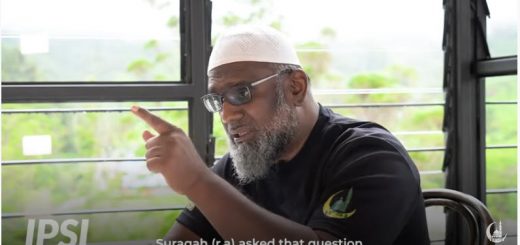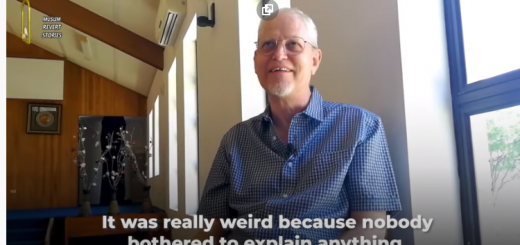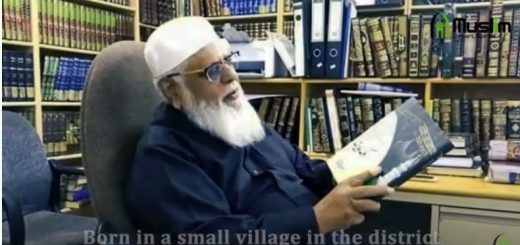The Call of the Creator of Earth and Light
by Yahiya Emerick
Allah has revealed many verses in the Qur’an which advise us to travel and see the world. (6:11) This, of course, is not a command to go on vacation constantly, rather, it is meant as a learning experience. Allah tells us to look at former civilizations, ruins of ancient days and upon how no people or generation is permanent. When we realize that others have passed away before us, we begin to understand that we, ourselves, will be less than a memory for generations to come after us. (6:6)
It has been a long time since I traveled. Too long, if what I learned is any indicator.
My wife and I arranged to take a trip from New York to Arizona. Yes, the lure of the Grand Canyon found its way into our collective imagination. One brother said to me before we left, “When you go to Mecca, you feel insignificant. When you go to the Grand Canyon you realize you are nothing.” Boy was he right.
Our flight from JFK was delayed, of course. From our hard waiting room seats we watched the Saudi Airlines pilots and flight attendants flirting with each other in their nearby lounge quite blatantly. I wonder if they become more Islamic during Hajj season? Insha’llah I’ll find out one day.
When we finally arrived in Phoenix, Arizona, we were amazed to see that everything was cast in hues of sandstone and clay: the buildings, the ground, the people and the roads. We were truly in another land. The drive north to the Grand Canyon was pleasant enough. (Our rental car had a great air conditioner.) It was amazing for me to see wide open countryside, baked to a crisp by the sun, with a small house here and there. How could anyone live in this hot place?
When we arrived at the Grand Canyon and looked upon that great pit for the first time, both my wife and myself became nervous inside. I hardly expected that I would feel shaken, but until you look down over a sheer cliff taller than the world’s tallest building, you won’t understand how we felt. It is truly awe-inspiring. (Not to mention there are no guard rails anywhere so one mis-step and you’re history.)
Given that we were over 7,000 feet above sea level, our breathing became difficult and we ran out of breath easily. I often remembered from that point on the verse in the Qur’an where Allah mentions high altitude as related to the difficulty to breathe. In fact, I remembered so many ayat during this trip and gained a greater appreciation of their full import that I might as well have been in school.
The Grand Canyon is truly an amazing sight to behold. A little tiny river carved it out over the course of five million years. The tour guides give you a little paper when you first arrive that describes the age of each exposed layer of rock. The upper layers are only a few hundred thousand years old, while the lowest layers are about two billion years old! Talk about feeling like nothing!
As I gazed over the multi-colored layers, the remembrance of another Qur’anic verse came to mind. Allah tells us that just as our colors and races are different and we can learn from that, so too is the earth filled with many colored layers which are also a sign of His power. Allah is telling us His earth is very old and took many ages to form, even as humans have variations which only time has wrought. (35:27-28)
There are many peaks, plateaus, and geological formations in the canyon. They all have names too. You’d be surprised to know that most of them are named after Hindu gods and such. There is the Brahmin temple, the Shiva Temple, the Vishnu schist, the Buddhist temple, the Zoroaster temple, the Throne of Wotan (a Viking god) and about two dozen others. The non-Muslim American tour guides all said these names as if they were a part of their own heritage.
I reflected on this for a moment. There was no “Muslim Temple” or “Muhammad Peak” or anything connected to Islam. All the names were given about a hundred or so years ago by various explorers and educated men. Did they not know about Islam? Now before you start saying they were enemies of Islam or hated Muslims, consider this: even in our modern world, the average person, nay, even the highly educated person, gives no thought to Islam whatsoever.
In other words, if some professor was going to write a book on global trends, he or she would probably not include any mention of Islam or Muslims whatsoever, other than to say trouble will come from the Middle East one day. The rest of his book will concentrate on Europe, America and East Asia. The people who want to keep Islam from popular society have done an excellent job of keeping Islam hidden behind curtains and many Muslims seem content to pray to Allah from the shadows. But that is another issue.
(I just hope the political-oriented secular “Muslims” don’t start a crusade to have some peak in the Grand Canyon named “Crescent Temple” or some other nonsense.)
If you’ve ever seen one of those prehistoric dinosaur movies then you’ll know how we felt when we were at the bottom of the canyon. We took a raft ride down the Colorado river and truly felt we were in “The Land That Time Forgot.” (We didn’t take a mule ride down the trails because we thought it was cruelty to animals after we saw how miserable the mules appeared in the noon-time 118 degree heat. I wouldn’t want to have that mule accusing me on Judgment Day of having pleasure at its expense when there was no real need for me to ride it.)
The water was cold and blackish-green. Our raft pilot was a middle-aged woman who spoke continually of how insignificant the Canyon makes her feel. After an hour of listening to her narrate the tour, both my wife and I realized that this non-Muslim was asking for spiritual direction and felt very empty inside. It was as clear as day. We left the raft a few hours later wishing we had some way to talk to her and some mechanism of follow-up.
A park ranger later led our group to view some rock carvings left by the Anasazi Indians about a thousand years before. To stand there and look upon what was once important to someone from long ago is quite humbling. The hands that made those stick figures and animal carvings are dead and crumbled to dust. What will become of us?
The next leg of our tour took us to the great Navajo Reservation. But first we passed through the Petrified Forest and saw trees that had turned to stone over the course of millions of years. Again, the lessons of our own insignificant existence came to mind. Then we arrived at Canyon de Chelly. A lush labyrinthine valley in the process of re-vegetation still inhabited by the Navajo to this day.
A jeep tour took us to see cliff-dwellings and petroglyphs made over a thousand years before and long since abandoned. “In the traces left by (former peoples) you will learn wisdom” came to my mind. Every time I saw a new set of ruins I tried to imagine what it was like long ago: full of people and life. Real people in real homes. People just like you and me. But a few crumbling bricks are all that remain of those countless souls. What were their Prophets like?
We spent a lot of time on the Navajo Reservation. (We left da’wah literature in every hotel we stayed at.) I was quite surprised to see churches all over the place. Even in the most desolate of areas I would spot some church or another. There were Mormon churches, Jehovah’s Witnesses, Catholic, Assembly of God, Pentecostal, Baptist and a dozen others. I was quite speechless upon realizing that these people were worshipping the god of those who killed their ancestors en masse.
White Catholics and Protestants, Spanish and American, came to this land and killed almost all of the tribal people they could find. The survivors were then herded onto desolate desert tracts and told to stay there where many others died. Government policies were enacted just a hundred years ago which forcibly removed children from their parents and banned the practice of their native religions.
Now those same Apaches, Hopis and Navajos are going to church and singing “Praise Jesus” all the while white Americans snicker. The brief revival of old Indian ways on various reservations has done nothing more than feed the white New-Age movement by providing Indian souvenirs like Dream Catchers, flute music, artsy paintings and neat quotes from long dead Indian chiefs.
Something tugged inside my soul when I witnessed firsthand the contemporary legacy of a proud people. Many of the men whose faces mirrored the black and white photographs of their noble ancestors revealed the shadows of alcoholism. Most of the Native Americans on the Reservation appeared to have become so assimilated; trading their ancestral solidly grounded spirituality and cosmology for a diffused “do as you want to do” ethic of Western mass culture. I could tell there was a great cultural struggle going on in the society there. Half the Navajos dressed like cowboys (boots, cowboy hats, jeans and short hair) while the other half had traditional long hair and wore less identifiable Western dress.
All the Navajo and Hopi radio stations play country and Western music even though they have their own music. So complete was the assimilation process that it could be said that in some sections of the Reservation Navajo identity is nearly just a quaint New Age feeling rather than a firmly grounded spirituality. In the same way that someone might call themselves Jewish but then have less than ten percent Jewish heritage and ethnicity. (Blond hair and blue eyes does not a Hebrew make.) In fact, I learned that most of the Native Americans in the region have abandoned the Reservations and now live in the big cities doing mostly menial labor. Crazy Horse and Geronimo’s legacy had indeed been abandoned– with only a small percentage still fighting to hold on to the traditions of their ancestors.
My wife and I discussed how a da’wah program might be started for Native American people. The usual short-sighted efforts by our “Islamic workers” would doubly fail here. A group of dedicated brothers and sisters would have to actually come and live on the Reservation permanently, work there and become friends with the local people. (Yes, I know you wouldn’t get to be a rich doctor or engineer there, but you would have a good shot towards the highest places in Jennah, the real home.)
A business venture would provide the perfect pretext for such an effort. Local people could be hired and shown how Islam blesses the relationship between boss and worker, a Masjid could be built near the business or in town. Free classes on Islam could be offered, a tight-family atmosphere could unite the Muslims and the new converts. Free housing could be provided to those who need it. Respect for native ways would be expressed in both deed and fact and the Muslims would show what true brotherhood and sisterhood is all about.
For that phase to succeed, however, you would have to face up to a very harsh truth. Most of our “Sheikhs,” “Maulanas,” “Scholars” and other self-appointed priests are arrogant, devoid of practical knowledge and filled with unIslamic cultural ideas. There I said it. Someone had to. But what do you expect? Such is the condition of “Islamic” education in the Muslim world today that this is what is produced in many cases. Not all cases, but many. (3:159)
Think about it. If you take a five year old kid living in an unIslamic “Muslim” culture, put him in a prison of a school where he is commanded to memorize vast amounts of words that he can’t understand or he’ll get a beating, don’t you think the end product would be less than desirable from the standpoint of the needs of the Islamic movement?
You would need a caring, understanding, knowledgeable and dedicated person or persons to do da’wah among the Indians of Native America. Of course you need that for da’wah to anybody but especially with those who have been crushed completely by America so much so that they now identify with their oppressor. Author Paolo Friere elucidates this strange master-slave process in “The Pedagogy of the Oppressed”.
The more I learned of Native American practices and beliefs the more I saw how Islam would be easy to introduce here. Basic American Indian religious practices resemble Hinduism to a great degree. Complete with spirits, gods, mysticism and the like. If the Blessed Prophet Muhammad can eradicate idol- worship in a pagan society, then we can at least attempt the same with a people who have mixed tribal paganism with Christian paganism.
We have advantages as Muslims in this endeavor. Christian missionaries come in and say that all Native American beliefs and practices are from the Devil. Then they command that they must abandon their culture and become like Westerners to be saved.
Islam, however, takes the basic attitude that there is some truth in the beliefs of others which came from authentic Prophets in the past. We don’t automatically condemn others but rather seek to understand their beliefs. (6:108) Then we can compare their teachings with Islam and gradually invite them to abandon what people made up in their past and to affirm what truth they have which Islam promotes. The “Great Spirit” is Allah, we would teach, and there is no need for other spirits or gods between us and the Great Spirit. This notion was first fostered during a discussion I had with a Navajo Muslim brother in New Mexico a few years back. This brother stated to me: “The reason I became a Muslim is because Islam takes the traditions and conceptualizations of my people to a purer level. I believe that my Navajo identity is complemented by my Islamic beliefs and practices.”
Christianity is never fully practiced anywhere in the world because it is a man-made religion hand-crafted from pagan sources. It never has any impact on the lives of a people or community other than to give them a feel-good ideology they can recall on Sunday. Islam, however, gives a life program which is designed to transform the individual on a day-to-day basis.
Navajo, Hopi and Apache traditional beliefs are filled with rituals that are performed every day. (22:67) Wouldn’t it be easier to offer Islam to a people who will then be encouraged to retain their unique cultural characteristics and at the same time joining the community of believers? All it requires is dedicated people. There are already a couple of Muslims from among the Navajos and others. Who will answer the call and set forth united to call these people to Allah’s way? (2:143)
There is a unique task for everyone in this life. A small or large part in a larger picture. Beyond our daily affairs of work and family, Islam calls upon us to act on a higher level for the common good of ourselves and all of humanity. There’s one thing I learned on this trip and it is that we must all listen to our hearts and answer this call. Only when we act out our faith in the world around us do we become truly happy–we become our faith rather than perform it externally.
Yahiya Emerick’s articles are reproduced here electronically with permission from the author. – H.A.
Number of View :2194

















